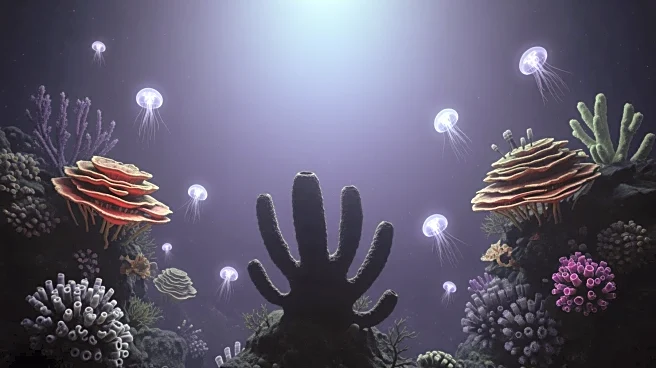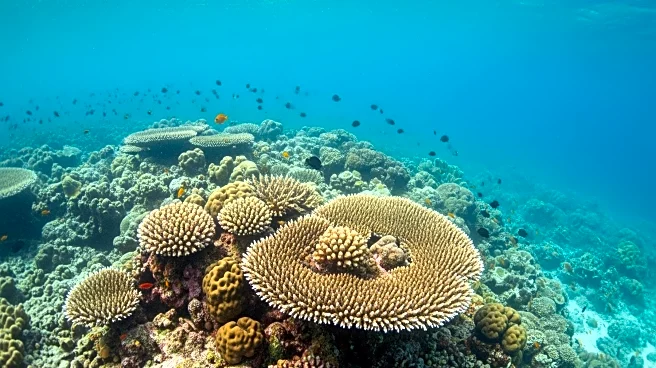What's Happening?
A study published in Nature has revealed that deep-sea brittle stars are more closely related across global oceans than their shallow-water counterparts. Researchers analyzed DNA from 2,699 specimens collected from various depths and museums worldwide,
uncovering that these spiky, star-shaped creatures have spread across oceans over the past 100 million years. The study highlights the ability of brittle stars to migrate vast distances, connecting regions like Tasmania and Iceland. This connectivity is attributed to the larvae of brittle stars, which can survive for extended periods in cold, deep-sea environments, allowing them to drift on ocean currents.
Why It's Important?
The study's findings challenge previous assumptions about the isolation of deep-sea species, revealing a complex network of connectivity that spans the globe. This has implications for understanding marine biodiversity and the resilience of deep-sea ecosystems. The ability of brittle stars to migrate and connect distant regions suggests that these ecosystems may be more robust against environmental changes. The research also underscores the importance of museum collections in providing valuable genetic data for studying marine life evolution.
What's Next?
The study may lead to further research into the conservation of deep-sea ecosystems, focusing on the impact of human activities such as deep-sea mining. Scientists may also explore the genetic mechanisms that enable brittle stars to survive and migrate across vast ocean distances. Additionally, the study could encourage the preservation and utilization of museum collections for future research, ensuring that valuable genetic data is available for ongoing studies of marine biodiversity.
Beyond the Headlines
The study highlights the paradox of the deep sea being highly connected yet incredibly fragile. Understanding the distribution and movement of life in this vast environment is essential for its protection. The research also emphasizes the role of museum collections in advancing scientific knowledge, showcasing how preserved specimens can provide insights into the evolutionary processes that shape marine life.














